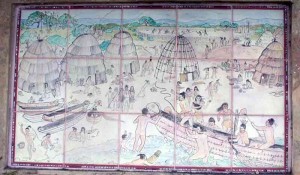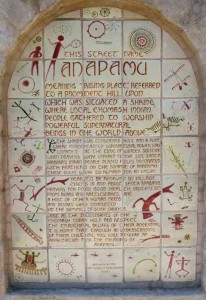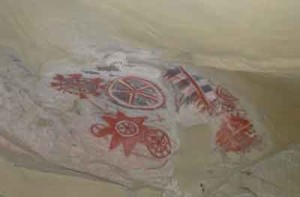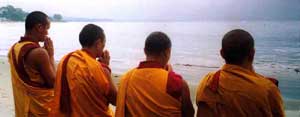More than 5,000 years ago, the indigenous Chumash people settled the region of the central coast of California they called Siujitu, and believed that they were the caretakers of the western gateway of the Pacific. Humqaq, now known as Point Conception, was the largest and most influential of Chumash villages, the center of a culture that stretched from Big Sur to Malibu, and inland as far as the central valley. They believed that the Great Spirit guided them to the area now known as Santa Barbara, with its protected harbors, rich soil, and mild climate.
Five villages flourished in the area Mispu (now occupied by the City College); Syukhtun, chief Yanonalit’s large village between Bath and Chapala streets (later called “El Baño”, site of El Baño pool); Amolomol at the mouth of Mission Creek; and Swetete, above the present bird refuge.
The Chumash flourished, and followed a belief system that recognized three distinct worlds and underscored their strong ideas regarding the sacredness of the creation. The Upper World was home to the powerful Sun, Moon, Sky, Coyote, Eagle, and Morning Star gods. The Middle World, thought to be an island in the middle of the Great Sea, and inhabited by the Sky People, traditionally regarded as the first humans; and the Lower World, occupied by the nunashish, dangerous creatures that used the darkness of night to commit evil acts in the Middle World.
The Chumash established their Sacred Spaces at the site of a significant mountain, valley, lake, tree, or river. Anapamu is the name they gave to a topographical summit, several of which are still within Santa Barbara's city limits. Their ceremonies reflected the blessedness of the creation story that began with the Star People’s emergence from the Seven Pointed Star (the Seven Sisters). As the Star People connected with Mother Earth’s water, they morphed into the Dolphin People absorbing the rhythm through the universe by the Great Mystery, was the common ancestor of the creatures of the seas, the skies and the land.




